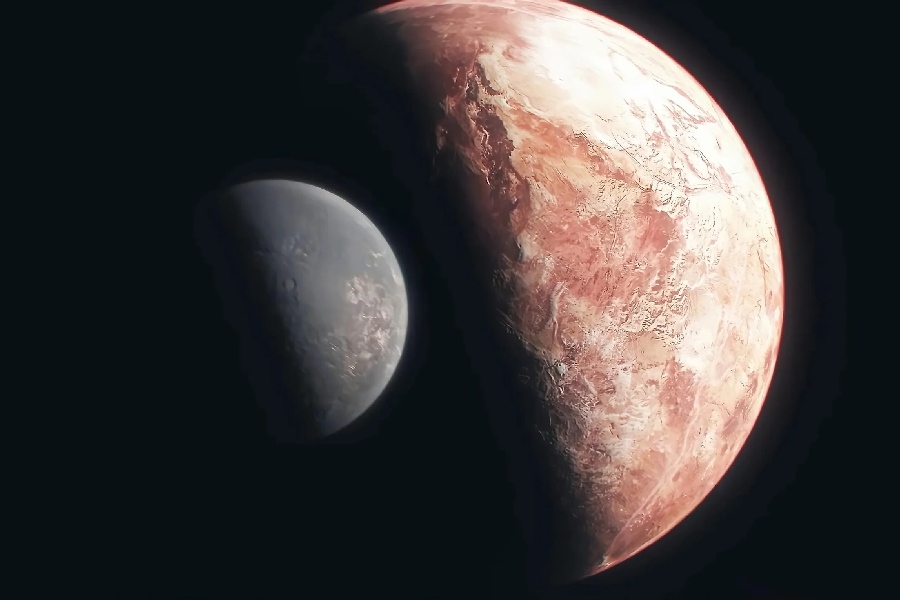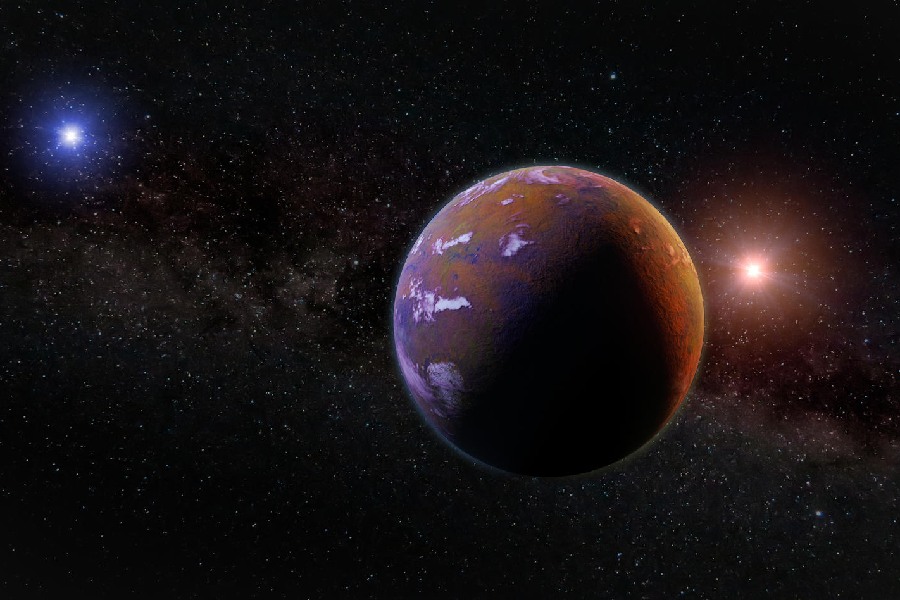Exoplanets stir the human imagination, unlike few other celestial discoveries. Besides their promising potential for life, they also teach us much about the processes that shape planetary formation and evolution.
Each new exoplanet detection fills astronomers with optimism and awe, beckoning adventures into alluring uncharted territories spread across the cosmos. But when was the first exoplanet discovered? Exoplanets are planets beyond our Solar System orbiting distant stars.
The path to identifying the first verified exoplanet stretches back in time. This article will trace the winding road of clues and evidence that led to officially spotting that first alien world around another star.
We will explore the early hints and methods that revealed potential exoplanets. The final verification process will also be covered, showcasing how technology enabled astronomers to claim the first discovery of an exoplanet beyond our Solar System.
When Was the First Exoplanet Discovered?
The first confirmed exoplanets, Poltergeist, Draugr, and Phobetor, were discovered in 1992 orbiting the pulsar PSR B1257+12. In 1995, 51 Pegasi b, the first exoplanet orbiting a main-sequence star, was found.
Other notable discoveries include Gliese 581c (2007), the first potentially habitable Earth-sized planet, and Kepler-186f (2014), the first Earth-sized planet in the habitable zone of its star.
Over 5,000 exoplanets have been confirmed as of 2023, detected using radial velocity, transit, direct imaging, and gravitational microlensing methods. These discoveries have expanded our understanding of the diversity and abundance of planetary systems.

Who discovered exoplanets?
In 1992, astronomers Aleksander Wolszczan and Dale Frail made a groundbreaking discovery – they found planets orbiting a dead star, known as a pulsar. The three planets, named PSR B1257+12 A, B, and C, were the first confirmed exoplanets ever discovered.
This revelation demonstrated that planets could exist in vastly different environments compared to our Solar System. Wolszczan and Frail’s finding was unexpected and surprising to the scientific community.
It challenged existing theories about planet formation and raised new questions about the possibility of planets forming around various types of stars, including stellar remnants like pulsars.
This discovery opened up entirely new and exotic environments for astronomers to search for planets, expanding the scope of exoplanet exploration.
First exoplanet around a Sun-like star
In 1995, astronomers Michel Mayor and Didier Queloz achieved a breakthrough by detecting the first planet orbiting a sun-like star, 51 Pegasi b. This discovery shattered our understanding of planetary systems, proving that exoplanets weren’t anomalies but potentially common around stars similar to our Sun.
Search for Exoplanets
Methods used to find exoplanets
Astronomers use different techniques to look for planets beyond our solar system. The main methods are:
Radial velocity
This measures tiny wobbles in a star’s motion caused by orbiting planets. It was used to find the first exoplanets. Stars wobble when planets orbit them. This method is very effective for finding large planets close to their stars, but it struggles to spot smaller, more distant planets. Many early exoplanet discoveries came from radial velocity measurements.
Transit photometry and direct imaging
This looks for tiny dips in a star’s brightness as a planet passes in front of it. The planet blocks some light, so the star looks slightly fainter. NASA’s Kepler spacecraft used this technique to discover thousands of exoplanets. It stares at stars waiting for transits – transits must be periodically repeated to confirm an exoplanet.
Planets are directly spotted next to stars, but planets are dim compared to stars. So, because this could be very hard, new telescopes are here to make it easier. This method is good for taking pictures of larger planets in wide orbits. However, the glare of stars makes it hard to imagine closer-in planets.
Importance of exoplanet discoveries
The finding of exoplanets has taught us a tremendous amount. We now know that planets are commonplace in our galaxy – the vast majority of stars harbor planetary systems of their own.
The discovery of these alien worlds has challenged many preconceived notions about what kinds of planets could exist. Strange new worlds have been found that are radically unlike any of the planets in our own Solar System.
This has fundamentally altered scientific ideas regarding just where life in the universe may be found. The exciting search continues to find small, rocky exoplanets analogous to Earth that may support life flourishing under other stars.

Closest Exoplanet to Earth – Proxima Centauri b
Proxima Centauri b orbits the star nearest the Sun. It was discovered in 2016. This planet orbits the red dwarf star Proxima Centauri. At only four light years away, it is the closest exoplanet. Proxima Centauri b orbits within the star’s habitable zone – the region where liquid water could exist on a planet’s surface.
It was found using the radial velocity method, which detects wobbles in the star’s movement. Proxima Centauri b is a minimum of 1.17 times Earth’s mass. It orbits its star every 11.2 days at a distance of only 4.5 million miles.
Significance for habitable worlds
The proximity of Proxima b makes it an exciting discovery. As the nearest exoplanet, it will be easier to study than most others. Scientists are very interested in whether Proxima b may support life. More studies are needed to understand the planet’s characteristics and environment around its small red star.
Discoveries of possibly habitable exoplanets, like Proxima Centauri b. Bring us closer to answering the big question: Are we alone? The search continues for more exoplanet neighbors that may sustain life.
Learning about the atmospheric composition and surface conditions on Proxima b can teach us a lot. Future telescopes may one day be able to directly image this alien world.
Properties of Proxima Centauri b
Proxima b has a minimum mass of about 1.17 Earths. It orbits the red dwarf star Proxima Centauri. This small star is cooler and dimmer than our Sun. Proxima b orbits at just 5% of the distance between the Earth and the Sun. A full orbit takes only 11.2 days.
Since Proxima b has not been directly observed, models predict its size and makeup. It is likely a rocky planet, perhaps slightly larger than Earth. Proxima b may have a dense iron core surrounded by a rocky mantle and surface.
Future studies of its atmosphere and temperature will reveal more details. Despite being our cosmic neighbor, the habitability of Proxima b is still unknown. On the positive side, it resides in its star’s habitable zone and is suitable for liquid water. However, its star frequently erupts giant flares of radiation.
Further observation is needed to understand if Proxima b has an atmosphere and any protective magnetic field. The ongoing analysis seeks to answer whether this exoplanet next door could support life.
Conclusion
The journey to discover worlds beyond our Solar System has unfolded over many years. With advanced technology and determined exploration, the first exoplanets were officially spotted in the early 1990s – much earlier than many would guess.
As we’ve seen above, the initial discoveries of planets orbiting a pulsar and a Sun-like star paved the way for the thousands of exotic exoplanets found since. The nearest of these is Proxima Centauri b, which orbits the star closest to our Sun, just four light years away.
We hope you have realized that seeking the answer to when was the first exoplanet discovered tells a story of expanding knowledge, challenging old ideas, and getting one step closer to solving the mystery of whether life exists out there among the stars.
This article has illuminated the winding path astronomers followed to definitively reach that first confirmed detection of an exoplanet beyond our solar neighborhood.
